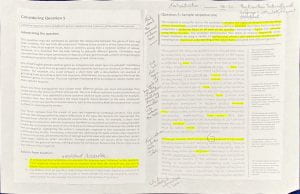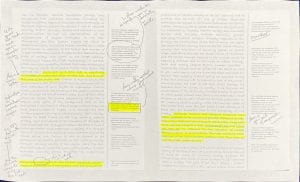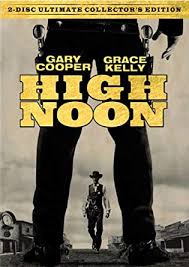Year 12 ATAR English
Task 4 Preparation- Formative Comments
Please note the observations below to target-set and to consider ways in which you might improve your performance in your Task 4 assessment this week.
Areas for Development- Content
- The titles of the texts are High Noon and The Dressmaker. No other variations are acceptable, and it doesn’t inspire confidence in your examiner if you spell the titles of the texts incorrectly. Please note that the titles are underlined.
- The Dressmaker was DIRECTED by Jocelyn Moorhouse and was RELEASED in 2015. . Please use this link to spell the names of characters correctly: https://www.imdb.com/title/tt2910904/
- High Noon was DIRECTED by Fred Zinnemann and was RELEASED in 1952.
- High Noon belongs to the Western genre. Please use this link to spell the names of characters correctly: https://www.imdb.com/title/tt0044706/?ref_=fn_al_tt_1
- The Dressmaker does not belong to the Western genre. It is a revenge comedy BUT it borrows heavily from the Western genre.
- Spell archetype and stereotype correctly.
- Power and status and connected and are features of the largely patriarchal society constructed by both texts. Kane’s power comes from his status as a (former) marshal, his gender in a patriarchal society, the symbolism of his tin star, the phallic symbolism of the gun. Tilly’s power largely comes from the weaponization of her dresses, while she has no power or status beyond that.
- If you’re writing about Helen Ramirez, she is a femme fatale and if you’re writing about Amy Kane, she is a damsel in distress. You’ve got this information already but relatively few people chose to use it.
- Please use all the resources on the ATAR English blog to help guide your reading of these texts. There is a wealth of information on there, which would add sophistication to your insight.
Areas for Development- Writing About the Texts
- Introduction structure still needs some work. Your thesis statement is your overall argument, which is then broken down into your topic sentences which should develop this argument in a clear and unambiguous manner. The global sentence should go beyond stating the entirely obvious.
- Your introduction should use the key words from the question to signpost the relevance of your response to the demands of the question.
- Many responses dealt with the texts too generally and acted, in effect, like plot/character summaries with little insight into specific scenes, how these were constructed and how the construction might position/invite a specific response from the viewer.
- Some students need to revise effective body paragraph structure.
- Avoid vague statements like ‘this has an effect on the viewer’ (for ex) without saying what that effect is, how it was constructed, in what part/section/scene of the text and how that might invite a specific response.
- Topic sentences need to establish a clear argument.
- Body paragraph structure needs some work. Remember that the structure of a body paragraph doesn’t change for a comparative response.
- Discourse, in some responses, wasn’t particularly sophisticated. You need to sound like you know what you’re talking about in a sophisticated and controlled manner.
- While you do need to add some context, some responses were characterised by rather too much of it. One or two short sentences (at most) would be sufficient. Some responses contained too much and this led to responses which were very general.
- Remember to use clear discourse markers to transition between your texts, particularly in your topic sentences where you switch to writing about a different text.
- There is an effective structure on the Year 12 English blog for you to follow. Please use it.





